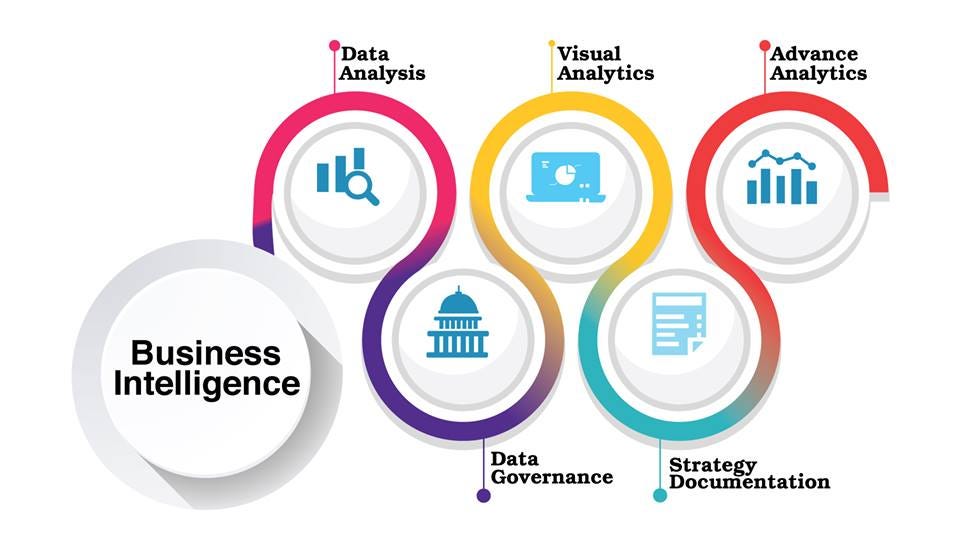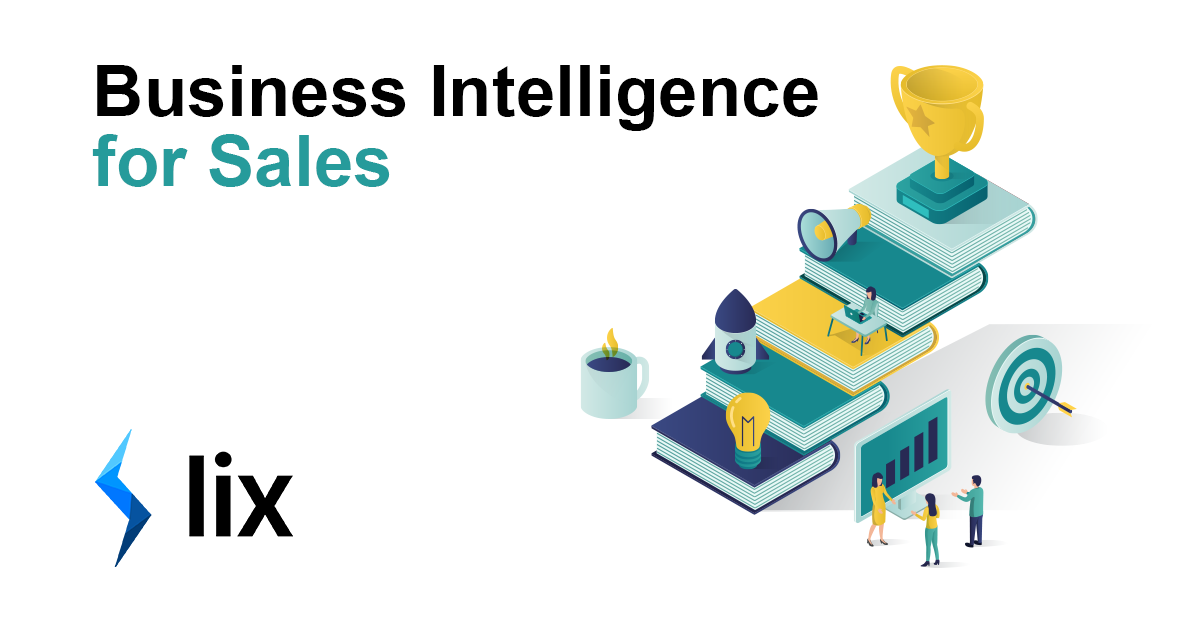Business intelligence for sales is a rapidly-growing field. It’s something the big players have been using for some time but with tools becoming more accessible to smaller teams, startups and even solopreneurs and getting in on the action.
What is business intelligence?
Business intelligence (BI) is a broad term that refers to the processes, tools and technologies used by organizations to extract, analyse and present business information. BI tools are used to help make sense of large volumes of data in order to identify trends or patterns. These insights are then communicated through dashboards and reports so that business stakeholders can act on them quickly.
BI technologies include data warehouses, data marts, ETL (extract-transform-load) tools for moving data from various sources into one central location for analysis, OLAP (online analytical processing) cubes for performing sophisticated calculations on large datasets, reporting tools such as Crystal Reports or Microsoft Excel macros — basically anything you need in order to work with large amounts of information efficiently and effectively.
Business intelligence can be used across departments and teams, giving companies a competitive advantage over their competition by helping them make better decisions faster.

Business intelligence is data-driven decision making
Business intelligence for sales, then, is about using that data to make better decisions.
If your business relies on sales to drive revenue, as a sales leader the decisions you make have a far-reaching effect. In a large company, your decisions can decide whether entire departments hit target or not. At a startup, it can be the difference between staying afloat or sinking. Business intelligence provides the data to inform and support those decisions. Helping you to make better decisions, faster.
Data-driven decision making is about making better decisions based on facts, not feelings or gut instinct.
Let’s look at some examples of how this might work:
- You want to increase revenue, so you decide to target more affluent customers with a bigger budget than the average consumer. Using your BI dashboard, you can identify the top five percent of consumers who have spent the most per month by dividing their total spending by their total number of purchases—and then segment these high spenders into a separate list. Using this list, you can find common traits among your top spenders to identify the type of customer that is most valuable to your business – allowing you to build a lookalike audience for your team to reach out to. These are now your “high value targets” (HVT).
- You’re looking for ways to improve customer retention and reduce churn rate (or attrition). Your BI dashboard tells you that 20% of customers that churn do so in the week before their renewal date; therefore, it might makes sense to come up with a strategy to contact customers in the period and remind them of the value you provide.
Business Intelligence for Sales: Tools
Now we know what business intelligence is and how it works – let’s dive into some of the tools you can use to achieve these results. I’ve included tools to suit different teams sizes, from those with the biggest budgets down to the startups and SMEs.
Salesforce Einstein Analytics
Salesforce Einstein Analytics is a cloud-based business intelligence tool that allows users to analyse their CRM data in real time.
As you might guess from the name, Salesforce Einstein is an add-on to the ubiquitous Salesforce CRM, which means it can be accessed through the same interface as your existing Salesforce account. Because it connects directly with your Salesforce CRM, there’s no need to prepare your data or transfer anything. Einstein’s AI will automatically look for patterns and apply the correct models to the data you have, providing predictions and suggestions without the need for input. It’s like having a small BI team integrated into your firm.
If you’re already using Salesforce, this is a great option for you. Like Salesforce, though, it won’t be cheap!
Sisense
Sisense is a business intelligence software that allows you to gather and analyse your sales data from various sources.
So for businesses with multiple products and channels, Sisense collects, analyses and visualises you BI data across multiple departments so that everyone has access to meaningful information at their fingertips. Where Salesforce Einstein works with the data you enter into Salesforce, Sisense will gather that data from almost anywhere your users interact with you – website, socials, email, CRM etc.
Tableau
Tableau are the gold standard in data visualisation.
You can use Tableau to create beautiful dashboards and data visualisations, to share with your team, board of director, investors etc. If you’ve watched presentations at board meetings, trade shows or meetups – chances are you’ve seen a Tableau visualisation!
Lix
This is the Lix blog, so it would be remiss of me to leave us out! The Lix tool is used for two primary reasons – lead generation and data gathering. When we’re talking business intelligence for sales, the latter should precede the former! If we think back to the example of growing revenue by finding top spenders, once you have a list of traits for your high value targets, you could use Lix to find those individuals and export their data.
Lix, as its core, is a LinkedIn data extractor. It works by exporting information from the world’s single largest store of business data – LinkedIn! LinkedIn is perfect for mining BI data because firms and individuals alike stay on top of updating their profiles. Often more regularly than they would their own websites.
Lix is great for smaller teams who perhaps don’t have access to some of the other tools listed here. You can even start for free with 1,000 rows of data every month.
Mixpanel
Mixpanel is another great tool for smaller teams. In fact, we use Mixpanel here at Lix.
It allows you to build dashboards and visualise data from your website and other sources in real time. I can use Mixpanel to see if my users are having errors with the Lix tool, how many of them are exporting, which cities have the most usage and so on.
It’s a really easy way to start getting actionable insights on the data you’re amassing – often without realising!
With the right tools and processes, sales teams can use business intelligence to improve decision making and increase their bottom line. Sales data can be used to pinpoint problem areas that need attention, identify opportunities for improvement, and make smarter choices about how to allocate time and resources. If you’re not already business business intelligence for sales, I hope this blog has inspired you to start!
